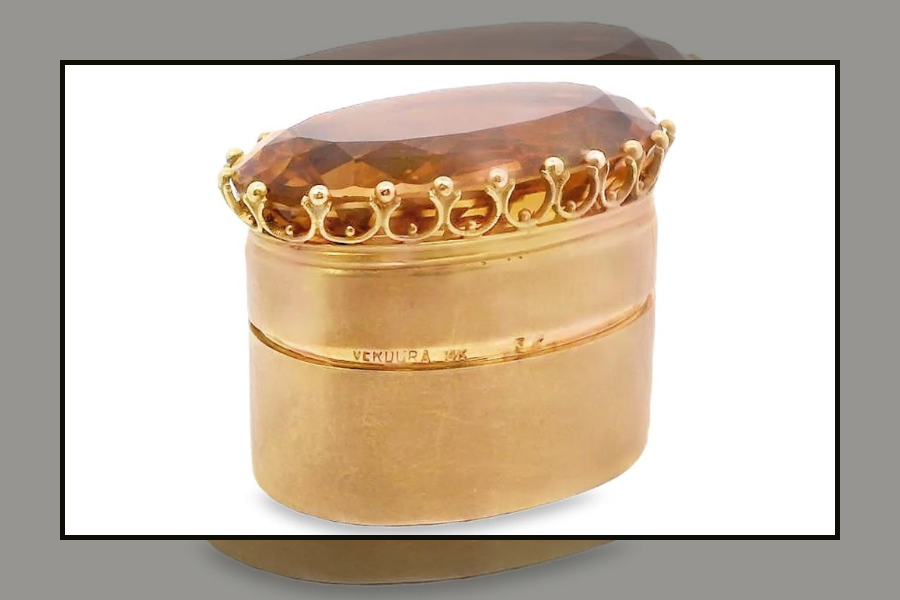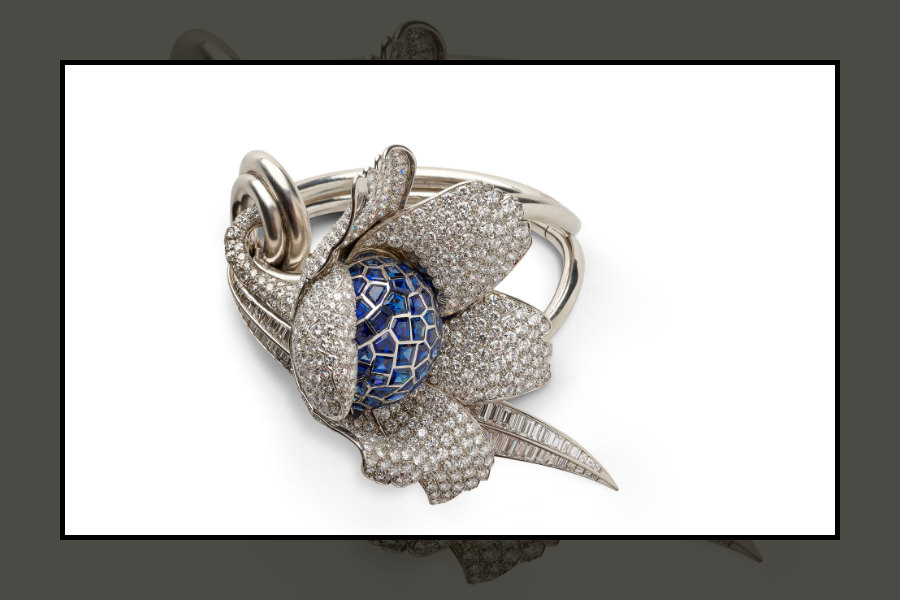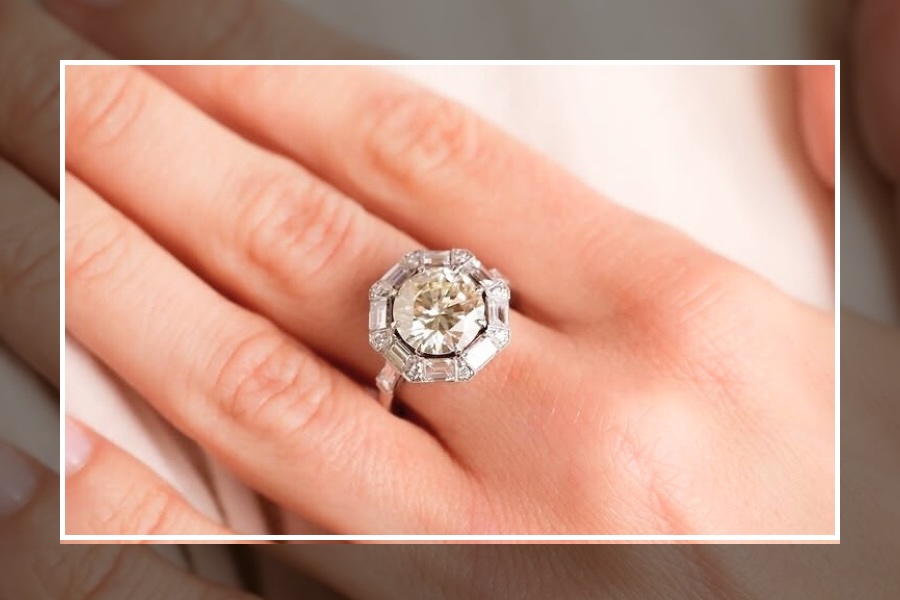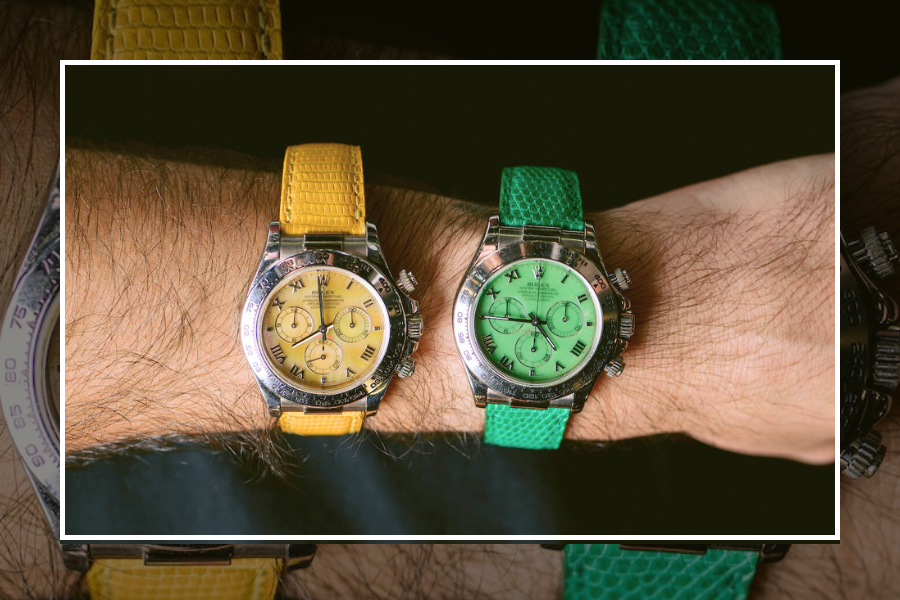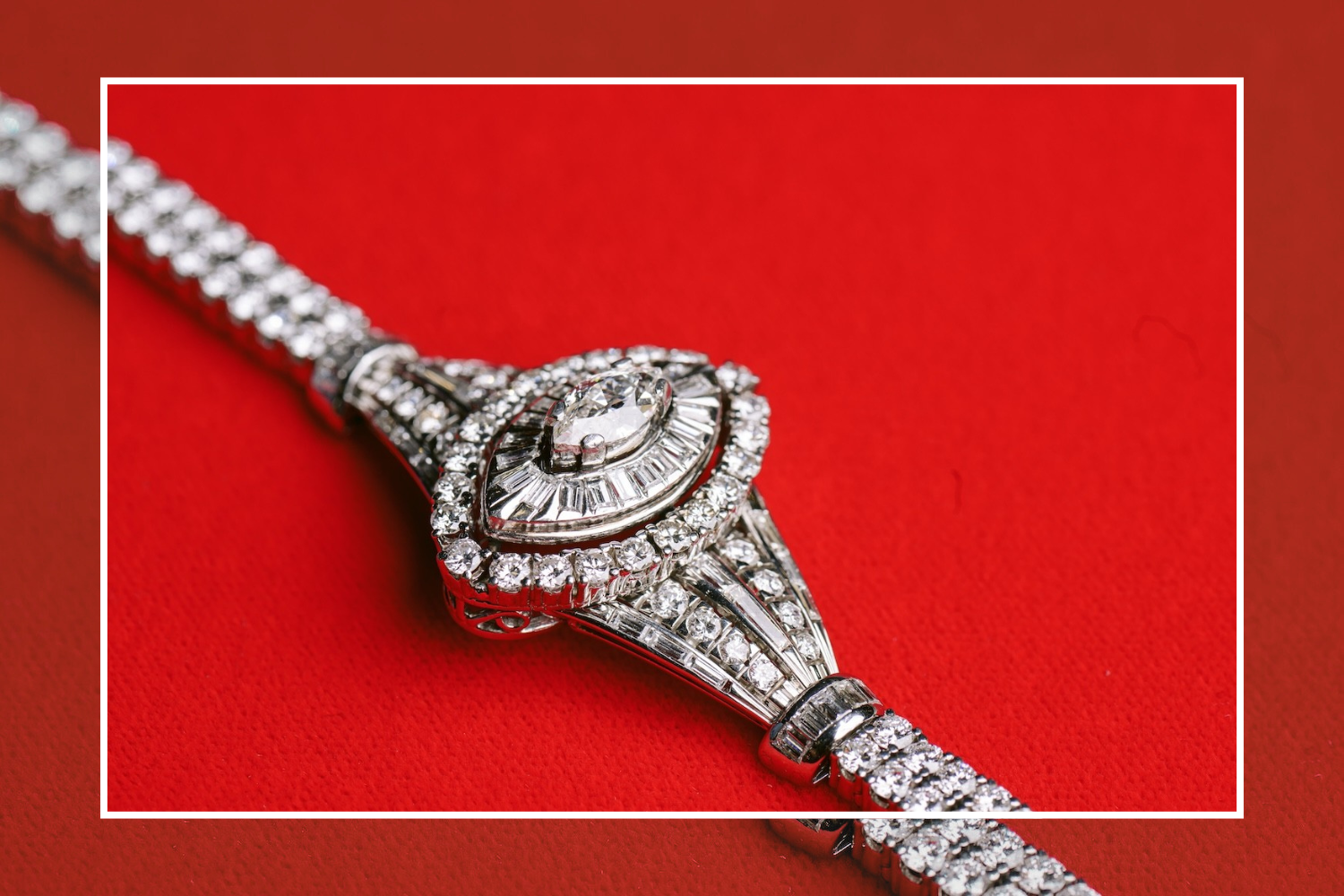When Benjamin Sberro of the Odeon Collection, who will be among the exhibitors, showed me a rare Verdura chessman brooch recently, the overlooked parts of Verdura’s narrative came rushing back to my mind. The delightful treasure encapsulates the designer’s passion for the Renaissance, his artistry and, perhaps above all, his irreverent attitude about what constitutes fine jewelry.
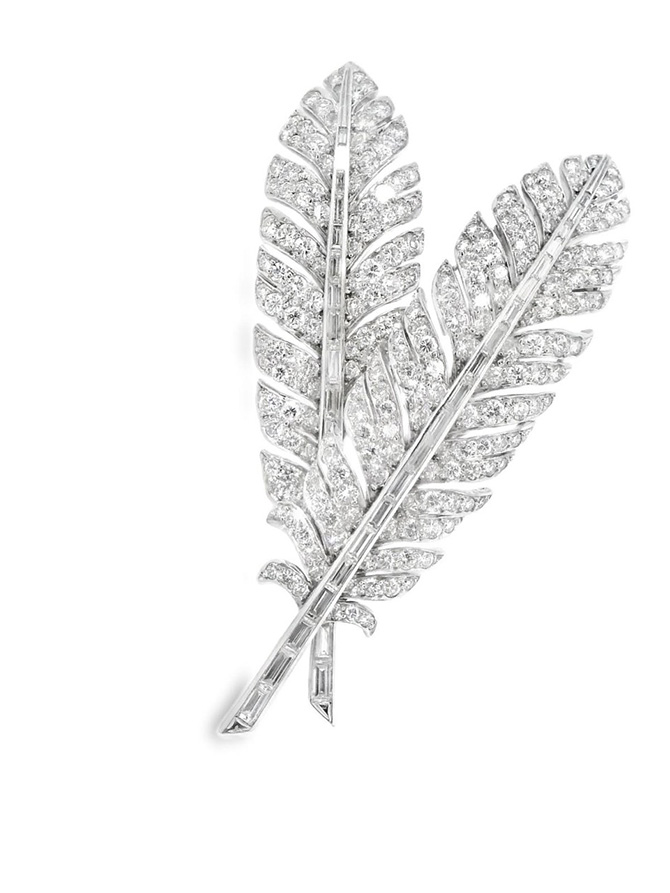
The diamond and platinum Verdura feather brooch, which was made in 1960,reflects Fulco’s love of Renaissance design. From the Odeon Collection
Fulco Santostefano della Cerda, Duke di Verdura, was born on March 20, 1899, near Palermo, Italy. Until he turned 13, the young aristocrat lived with his grandmother, Princess Maria, at Villa Niscemi, an 18th-century estate covered with bougainvillea and surrounded by gardens.
The villa had a large staff and lots of animals including cats, dogs, two baboons and a pet camel named Moffo. At eight years old, Fulco explained in the memoir he wrote about his childhood Happy Summer Days, his passion for Renaissance art was ignited by the book Raphael by Eugène Muntz he found in the villa library.
Fulco incorporated practically everything he experienced during his youth living at Villa Niscemi into his jewelry collection later in life.
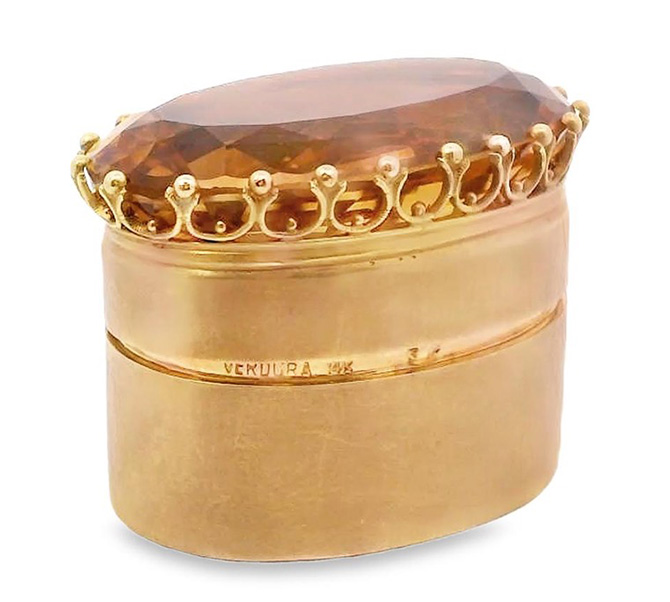
A gold Verdura pillbox made in 1940 features a 58-carat citrine in a coronet style setting that reflects details of Fulco’s family crest. From the Odeon Collection
After his father passed away in 1919, Fulco received his inheritance and became a fixture of the social seasons in Venice and Paris. Among his close circle of friends were the American songwriter Cole Porter and his wife, Linda. Ten years into his café society lifestyle, Fulco sent out invitations embossed with his family crest, a five-pronged ducal coronet, for his Lady Hamilton Ball at the Palazzo Verdura in Palermo.
The five-pronged ducal coronet became a logo of his label when he launched his collection in New York in 1939. Prior to that, he worked for Coco Chanel in Paris and then for Paul Flato in America where he had relocated in 1934.
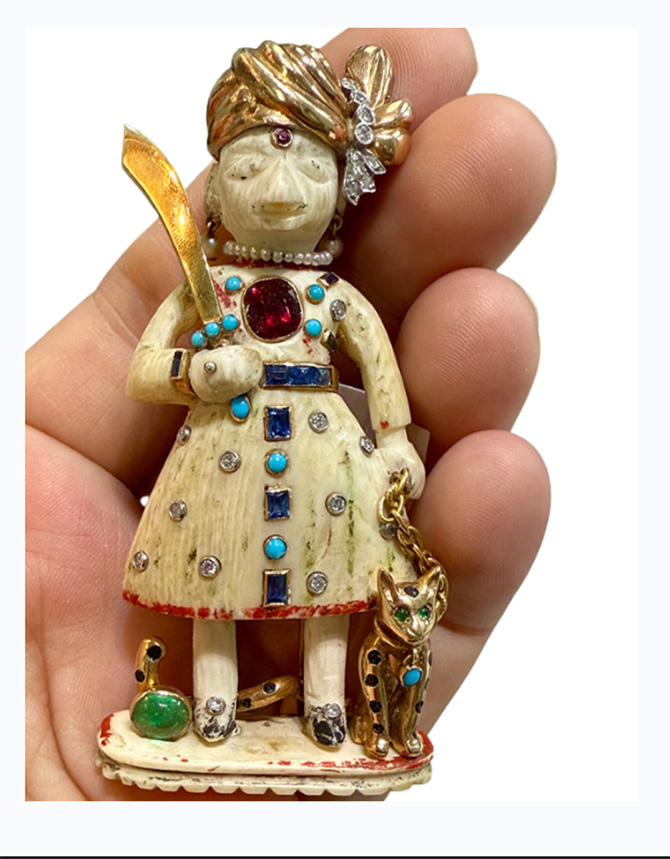
A Verdura brooch, made in 1939, with an 18th-century chess piece that Fulco decorated with various gems and a cat on a leash. From the Odeon Archive Collection
Fulco cleverly paid tribute to the Renaissance era he adored by incorporating unconventional materials into his designs.
To bring seashells, one of the period’s most ubiquitous motifs, into his work, he used real lion’s paw shells. Some of the seashells he found on the Fire Island seashore. Others were purchased at the American Museum of Natural History gift shop. It gave me great pleasure to include two of Verdura’s shells, which he probably purchased from the gift shop and then bejeweled, in my 2021 Beautiful Creatures exhibition at the same museum.
A Life magazine article about antique chessmen ignited Fulco’s interest in the whimsical creations. Shortly thereafter, a woman brought about 27 chess pieces from the 18th century to the boutique. Fulco bought them all and made them bejeweled brooches.
Henry Fonda acquired the first one for his wife, Frances. Other members of the elite chess club included Tyrone Power’s wife, Annabella, and theater producer, Irene Selznick.
While Verdura has produced shell brooches since the originals were made, to my knowledge, no additional chessmen have ever been created.
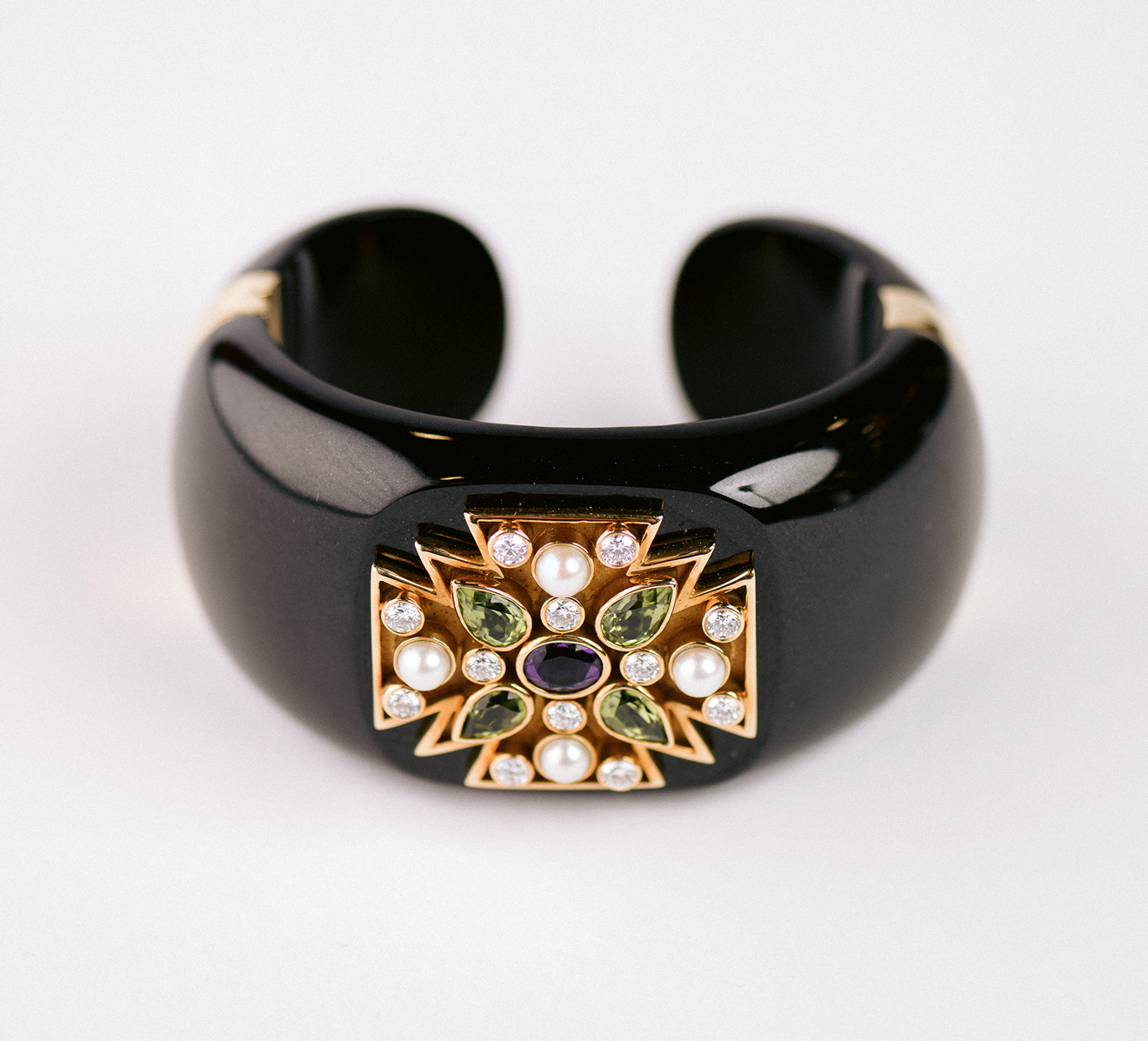
A Verdura Maltese Cross Cuff spotted at the 2022 Original Miami Beach Antique Show. Image courtesy of Lucas Botz Photography.

